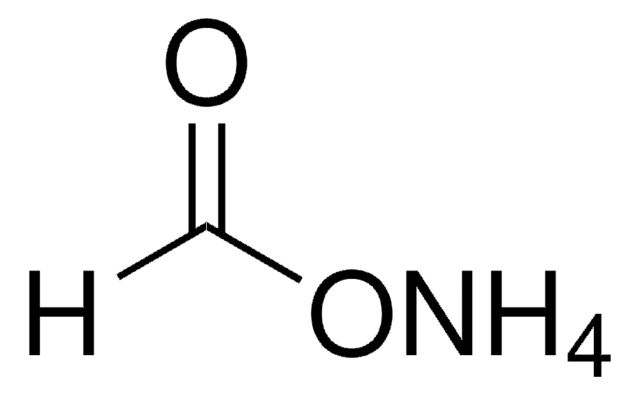69892
MES monohydrate
BioXtra, ≥99.0% (T)
Synonyme(s) :
Acide 2-(N-morpholino)éthanesulfonique, Acide 4-morpholineéthanesulfonique monohydrate
About This Item
Produits recommandés
Gamme de produits
BioXtra
Niveau de qualité
Essai
≥99.0% (T)
Forme
powder or crystals
Plage de pH utile
5.5-6.7
pKa (25 °C)
6.1
Pf
>300 °C (lit.)
Solubilité
H2O: 0.5 M at 20 °C, clear
Densité
10.66 g/mL
Traces d'anions
chloride (Cl-): ≤50 mg/kg
sulfate (SO42-): ≤50 mg/kg
Traces de cations
Ca: ≤50 mg/kg
Cd: ≤5 mg/kg
Co: ≤5 mg/kg
Cr: ≤5 mg/kg
Cu: ≤5 mg/kg
Fe: ≤5 mg/kg
K: ≤50 mg/kg
Mg: ≤5 mg/kg
Mn: ≤5 mg/kg
Na: ≤50 mg/kg
Ni: ≤5 mg/kg
Pb: ≤5 mg/kg
Zn: ≤5 mg/kg
Application(s)
agriculture
diagnostic assay manufacturing
general analytical
microbiology
Activité étrangère
DNase, none detected
NICKase, none detected
RNase, none detected
protease, none detected
Chaîne SMILES
O.OS(=O)(=O)CCN1CCOCC1
InChI
1S/C6H13NO4S.H2O/c8-12(9,10)6-3-7-1-4-11-5-2-7;/h1-6H2,(H,8,9,10);1H2
Clé InChI
MIIIXQJBDGSIKL-UHFFFAOYSA-N
Vous recherchez des produits similaires ? Visite Guide de comparaison des produits
Catégories apparentées
Description générale
Application
- to adjust the pH of the growth medium, facilitating gene expression analyses aimed at understanding the molecular mechanisms
- in the fixation and imaging of cellular components, enabling the study of hypotonic stress′s physiological effects on cell structure and function through Super-Resolution and Live-Cell Microscopy
- to adjust the pH of the growth medium to 5.5-7.0 in an in vitro cell wall stress assay
- as a buffering agent to stabilize enzymatic solutions
- as a component of PAGE running buffer
Caractéristiques et avantages
- Suitable for Biochemical and Cell Biology Research
- Tested for the presence of anionic and cationic traces
- Tested to confirm low levels of heavy metal contamination, ensuring suitability for various applications
- Effective Buffering from pH 5.5-6.7 (25 °C) with a pKa of 6.1 (25 °C)
Notes préparatoires
Autres remarques
Sterilization: Sterilization should be by filteration through 0.2μM filters. Autoclaving is not recommended by any sulfonic acid buffers. If buffers must be nuclease-free, it is best to treat the water, then add the buffer solids after autoclaving. When MES solutions are autoclaved, they turn yellow (although pH does not change measurably. The identity of the yellow breakdown product is unkown.
Code de la classe de stockage
11 - Combustible Solids
Classe de danger pour l'eau (WGK)
WGK 1
Équipement de protection individuelle
dust mask type N95 (US), Eyeshields, Gloves
Faites votre choix parmi les versions les plus récentes :
Déjà en possession de ce produit ?
Retrouvez la documentation relative aux produits que vous avez récemment achetés dans la Bibliothèque de documents.
Les clients ont également consulté
Notre équipe de scientifiques dispose d'une expérience dans tous les secteurs de la recherche, notamment en sciences de la vie, science des matériaux, synthèse chimique, chromatographie, analyse et dans de nombreux autres domaines..
Contacter notre Service technique




